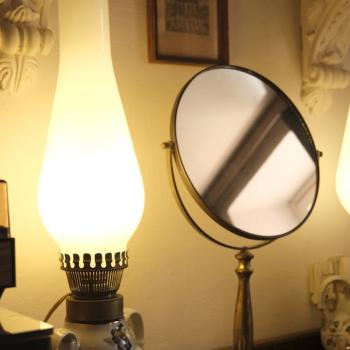In a high culture that no longer believes in beauty or meaning, art becomes reduced to interesting gestures. Consider this “work,” as described by art critic Blake Gopnik:
On Saturday evening, in the back room at Postmasters Gallery in Chelsea, veteran dealer Magdalena Sawon gave me an early glimpse of a work called “Stolen Pieces,” which she said has never been exhibited. Made by a young Italian couple, Eva and Franco Mattes, but kept secret since the mid-90s, it consists of a display case full of tiny chips from significant works of art, snatched or snapped off by the duo over a two-year crime spree. The artists did the deeds between July 28, 1995, and July 29, 1997, in museums all around the world.
The loot includes a manufacturer’s label peeled from the aquarium in which Jeff Koons floated his famous basketballs in 1985. There’s a short length of shoelace from a Claes Oldenburg soft sculpture. There’s a little blob of lead from an installation by Joseph Beuys, and a couple of threads from an Andy Warhol. Perhaps most significantly, there’s a tiny chip of porcelain from the urinal “Fountain” of Marcel Duchamp, taken from an unspecified exhibition.
The artists also claim to have lifted bits from works by Kandinsky and Rauschenberg. Sawon says the piece is being unveiled now because the statute of limitations has run out on its thefts.
Now the works that were damaged were arguably negligible themselves, though they are very valuable and belong to somebody. But I’m thinking that what makes this sort of thing “art” is its ability to provoke serious commentary from art critics:
“Stolen Pieces” may not look that great, but like so much of the work made in the 20th century — like so much art, ever — “Stolen Pieces” gets its force from the questions it raises.
— Did these artists’ tiny thefts much affect the works they stole from? Does it really matter that one of Kienholz’s big junk piles is minus one bottle cap? How many of these museums’ visitors would have ever noticed or been touched by the alterations?
— Does “Stolen Pieces” finally deflate the old cliche that a true masterpiece is something “from which nothing can be taken and to which nothing can be added without harm”? There’s hardly a single work by an Old Master that doesn’t look substantially different than it did when it was fresh, and yet we still find plenty to admire in them. (In fact, people objected like crazy when Michelangelo’s Sistine Chapel ceiling was returned to some semblance of its original bright colors.)
— Originally, weren’t most of the targeted works themselves all about attacking old-fashioned notions of the precious work of art whose every detail deserves to be worshipped? Before he became famous, Oldenburg let his viewers touch and take away his ultra-sloppy works of art. I can’t imagine that César could have seen the speedometers on his crushed cars as equivalent to so many brushstrokes by Titian, to be preserved at any cost. Did Beuys really treasure every blob of metal scattered during one of his anti-object performances?
— By making almost imperceptible alterations to other works of art, Eva and Franco Mattes have created a significant new one. Does that leave the world of art a richer place or a poorer one? (So long as no other vandals follow in these artists’ footsteps, that is. But once the Matteses’ move has been made, there’s no reason for anyone else to repeat it.)
via Blake Gopnik – Couple stole more than other artists’ ideas.
Significant new art?












